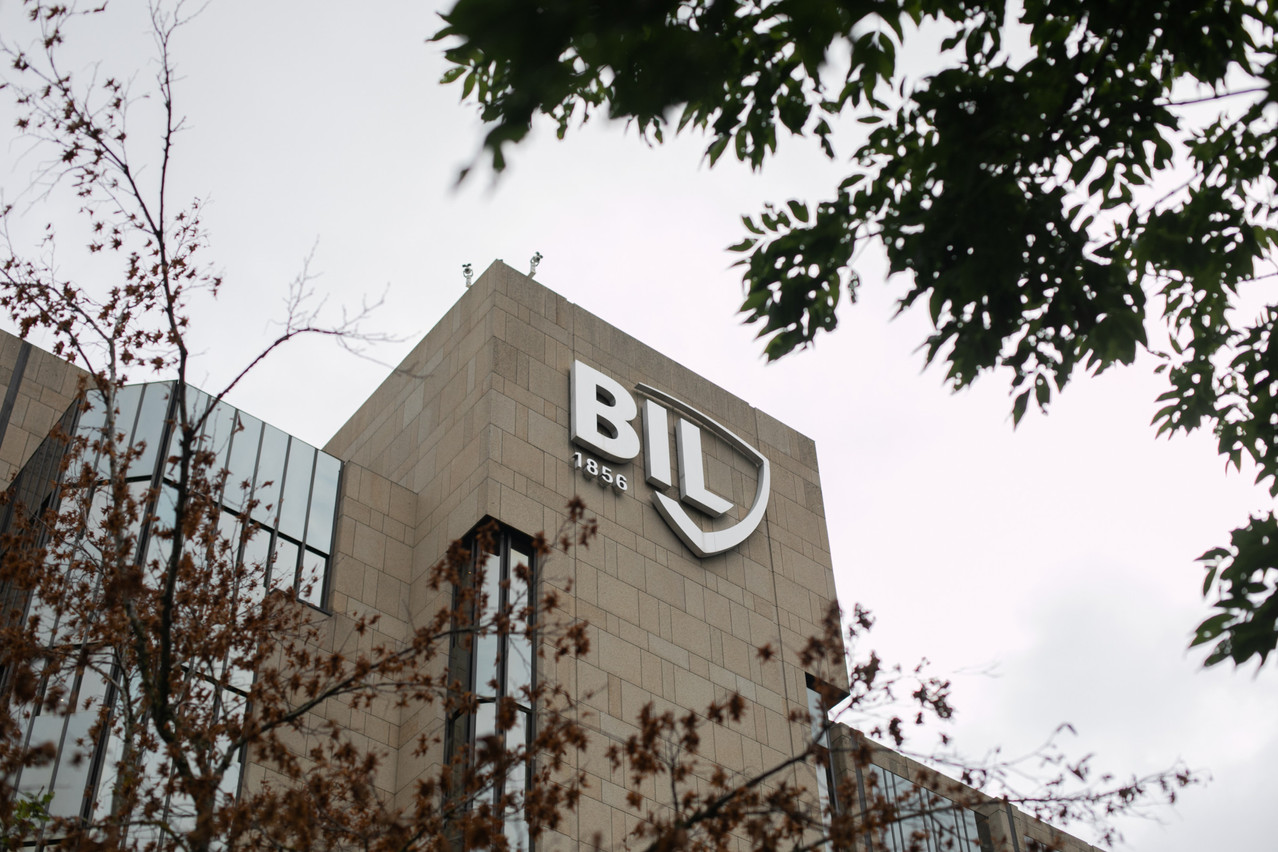If one is picky, in terms of a ‘legal’ date, the Savings Bank (Caisse d’Épargne) wins by a few months, since it was established by the law of 21 February 1856. The Grand Ducal decree establishing the Internationale Bank Luxemburg, the first official name of the , was not issued until 16 days later, on 8 March 1856.
BIL was originally founded with German capital, as Luxembourg benefited from the facilities of the Zollverein, the customs union established with German-speaking states. At the time of its creation, it had a real capital of 6 million francs. 1856 was a landmark year for the country’s economic development, with the creation of the railways and the development of the iron and steel industry. On the banking front, BIL was the first to open its counters at its headquarters in the rue Notre-Dame on 31 July 1856, while the first customers of the Savings Bank had to wait until mid-August.
BIL notes
The beginnings of the new bank were complicated for two reasons: firstly, the Luxembourg state did not give legal tender status to the banknotes it issued, and secondly, many German states did not accept BIL banknotes, as a result of Prussian legislation refusing foreign banknotes. BIL was then forced to withdraw a large proportion of the notes in circulation and to reduce its capital. In Luxembourg, the bank was only moderately successful with residents, who were not used to using banknotes and were suspicious of credit institutions. It therefore expanded its activities abroad, so that in 1872 it was able to double its effective capital to 20 million francs.
In addition, the Grand Ducal regulation of 10 August 1862 authorised deposits by foreigners at the Caisse d’Épargne. Deposits rose rapidly to reach the first million Luxembourg francs in 1869 and reached 100 million Luxembourg francs in 1916. Prior to 1900, the sole mission of the Savings Bank was to manage the savings entrusted to it. The creation of Crédit Foncier (mortgage lender) in 1900 and the Service des Habitations à Bon Marché (affordable housing office) in 1906 gave the Caisse d’Épargne the opportunity to make this capital available directly to the country and thus contribute to the prosperity of the grand duchy.
Headquarters
In 1859, the headquarters of the Caisse d’Épargne were located in the Maison Ketter, rue Chimay in Luxembourg. The first branch was located in the rue du Marché-aux-Herbes at the former government address, where the Grand Ducal Palace now stands. The construction of a new head office on Avenue de la Liberté took place between 1909 and 1913. The current Hôtel de la Caisse d'Épargne was built by the Luxembourg architect Jean-Pierre Kœnig, with the support of the Chemins de fer d’Alsace et de Lorraine. The state savings bank expanded its holdings by acquiring the former Arbed steel headquarters on the Plateau Bourbon in 2015.
In 1901, BIL’s headquarters moved to Boulevard Royal, in a building designed by the architects Pierre and Paul Funck. A new headquarters was built in 1989 on the route d’Esch, where it still stands today. The old headquarters has since become the HQ of the Central Bank of Luxembourg.
Recognised as true pillars of the financial centre, Bil and the state savings bank--which became in 1989, and rebranded as Spuerkeess in 2020--play an essential role in the development of the Luxembourg economy, as a provider of retail, private and corporate banking. Bil is currently owned by Legend Holdings, a major investment company based in Beijing and listed on the Hong Kong stock exchange, with a minority stake held by the Luxembourg state.
Originally published in French by and translated for Delano
